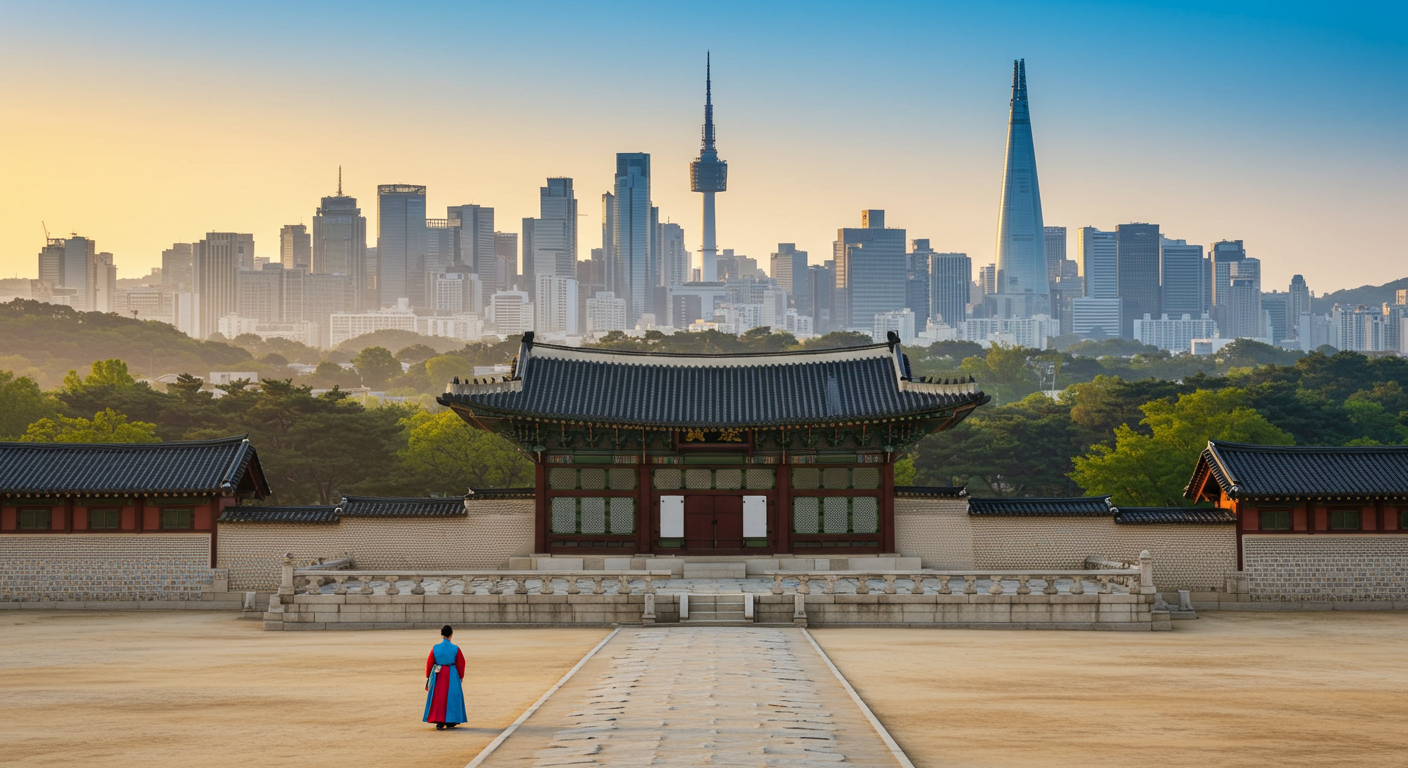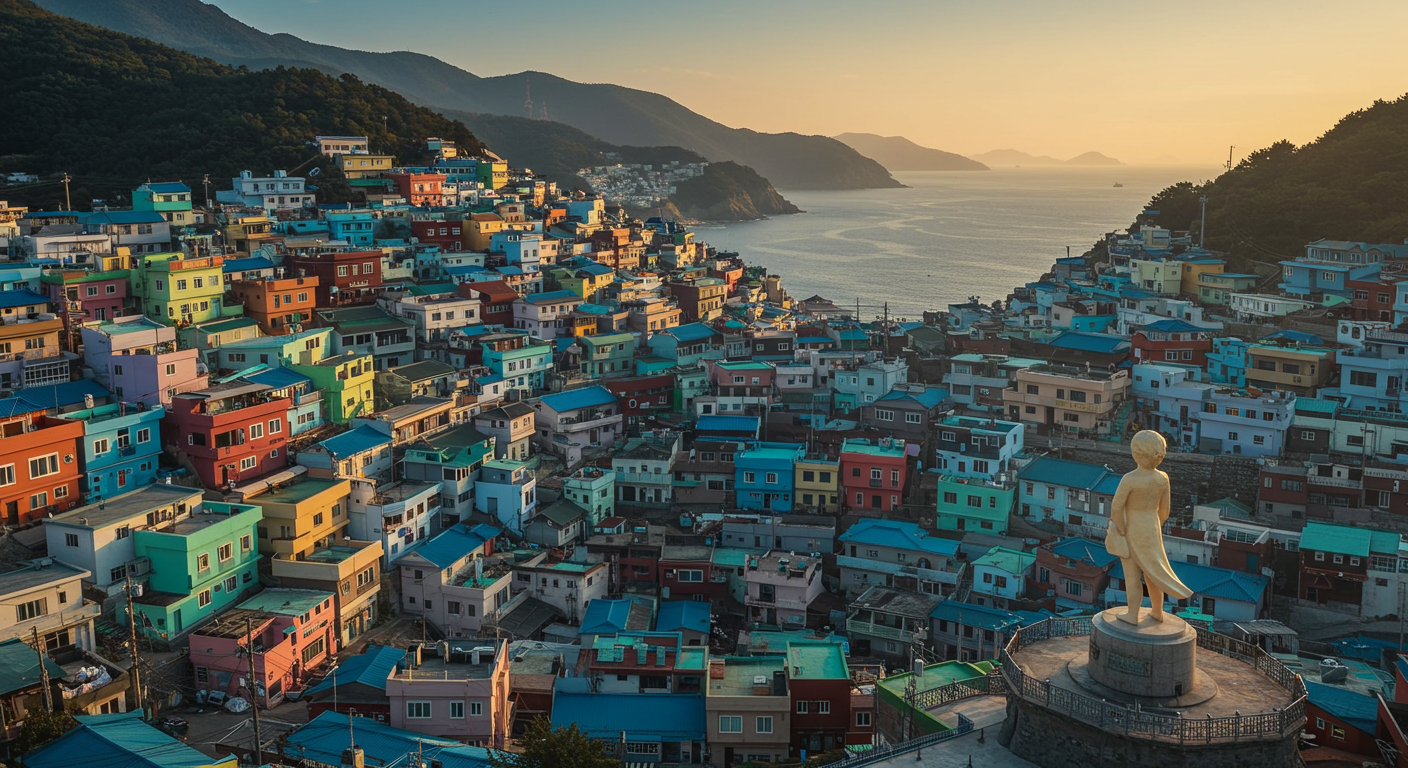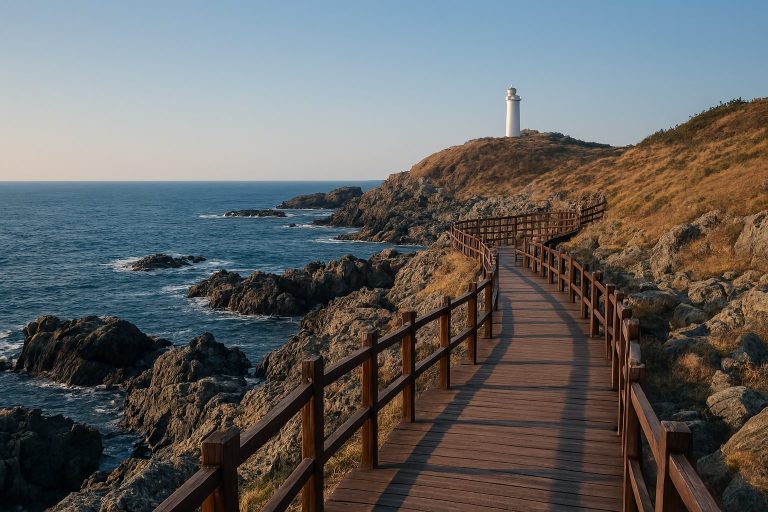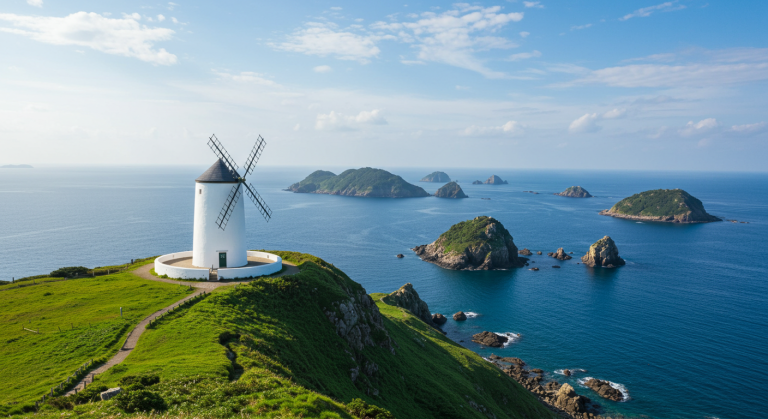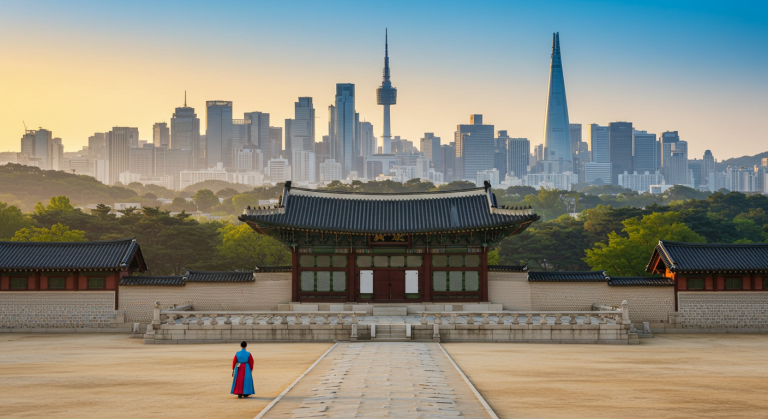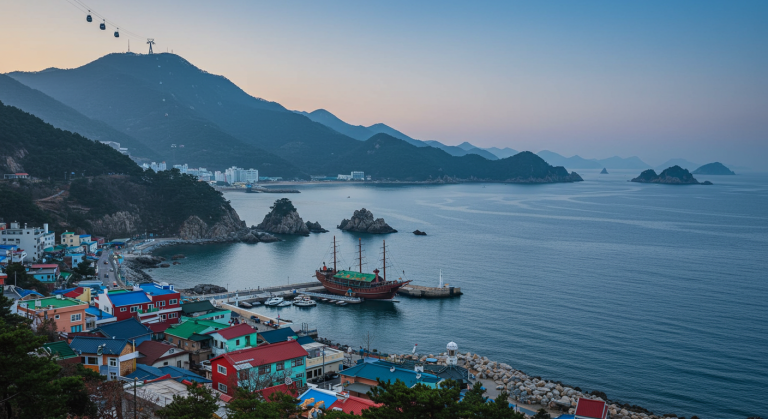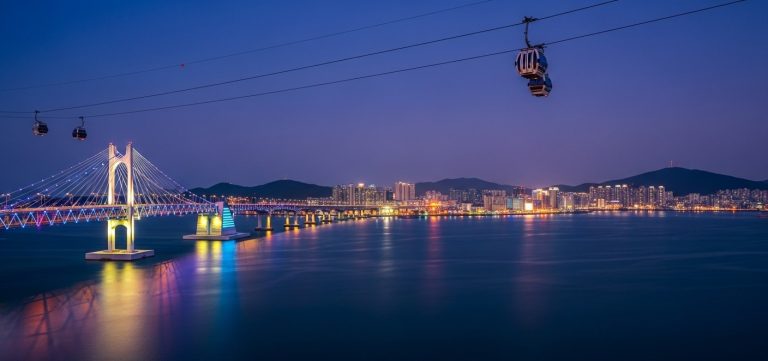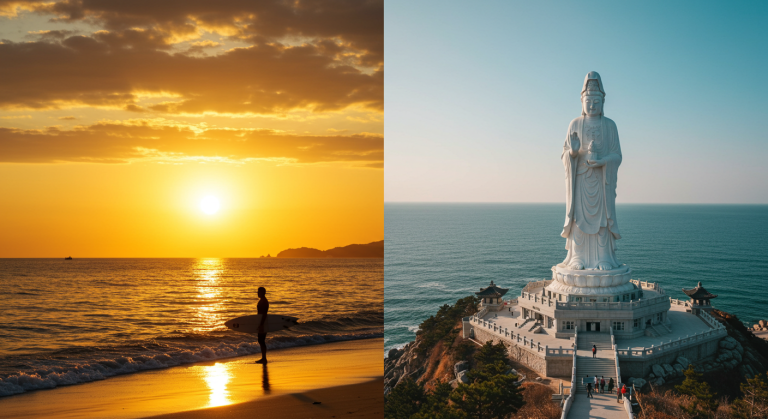Planning Your Busan Trip: Essential Tips, Hidden Gems, and Culinary Delights

Have you ever dreamed of a place where shimmering skyscrapers meet pristine beaches and ancient temples cling to rugged mountainsides?
For years, I only ever heard about Seoul, but let me tell you, its coastal sibling, Busan, is where the real magic happens, and it completely stole my heart.
It’s South Korea’s second-largest city, yet it manages to blend the high-energy vibe of a major metropolis with the laid-back charm of a seaside resort.
If you’re feeling overwhelmed trying to piece together the perfect trip, don’t worry—I’ve been there, staring at maps and endless blog posts, and that’s exactly why I put together this massive, detailed guide just for you! 😊
Busan: South Korea’s Coastal Gem Awaits You
Busan, or Pusan as some older signs still read, is the gateway to the southern part of the Korean peninsula, serving as a massive port city.
But look beyond the shipping containers and you find a vibrant cultural hub steeped in history, fantastic cuisine, and some seriously stunning natural beauty, offering a stark but wonderful contrast to Seoul.
When I first arrived, the fresh sea air immediately hit me, a welcome change from the city smog I was used to, and I knew instantly that this trip was going to be different.
Its strategic location means it has played a significant role throughout Korea’s history, most notably during the Korean War when it served as the temporary capital and the only city not captured by North Korean forces.
Understanding this history helps you appreciate the resilience and unique identity of the city, which is why places like the United Nations Memorial Cemetery are so incredibly moving.
The blend of high-tech modern infrastructure with historical remnants and natural wonders is what makes Busan one of the most compelling travel destinations in Asia, and I promise you, it’s worth every bit of your vacation time!
The Best Beaches in Busan for Every Traveler
Let’s be honest, you can’t come to Busan without spending a substantial amount of time on its world-class beaches.
Whether you’re looking to relax, party, or catch a wave, Busan has a sandy stretch perfectly tailored to your mood.
Haeundae Beach: The Icon
Haeundae is arguably the most famous beach in South Korea, and for good reason—it’s massive, impeccably clean, and surrounded by a forest of gleaming skyscrapers and luxury hotels.
During peak summer, it feels less like a beach and more like a massive, joyous celebration, with thousands of colorful umbrellas dotting the sand.
When I went, I loved simply walking the entire length of the beach and then exploring the nearby Dongbaekseom Island park, which offers amazing views back toward the city and the Gwangandaegyo Bridge in the distance.
It’s also the hub for annual events like the Haeundae Sand Festival, so make sure to check the local calendar when planning your visit.
🏖️ Case Study: A Perfect Haeundae Day
I started my Haeundae day with an early morning stroll (around 7 AM) to see the sunrise over the ocean, which was incredibly peaceful. Then, I grabbed a coffee from one of the chic cafes across the street, spent the afternoon swimming, and finished the day watching street performers near the Busan Aquarium. It’s truly a beach that transforms throughout the day!
Gwangalli Beach: Night Views and Coffee
If Haeundae is the icon, Gwangalli is the romantic sweetheart of Busan’s coastline, primarily famous for the breathtaking view of the Gwangandaegyo Bridge, which lights up in spectacular fashion every night.
The atmosphere here is a bit more relaxed than its famous neighbor, with an incredible density of stylish cafes, bars, and restaurants lining the shore.
My personal recommendation is to secure a window seat at a second-floor cafe just before sunset, order a latte, and watch the bridge turn into a dazzling light show—it’s seriously one of the best free shows in the world.
The beach itself is perfect for lounging, and you’ll often find locals enjoying picnics, live music, or even flying drones over the water.
Songjeong Beach: Surfer’s Paradise
For those seeking something a bit more active or a lot less crowded, Songjeong Beach is Busan’s hidden gem for water sports enthusiasts, particularly surfers.
The waves here are generally smaller and more gentle than international surfing hotspots, making it an excellent place for beginners to try their hand at the sport.
There are countless surf schools right on the sand offering board rentals and quick lessons, so you can literally walk up and be riding a wave within an hour, which is exactly what I did, with hilariously awkward results.
It’s a smaller, calmer beach nestled between two headlands, giving it a cozy, protected feel that is wonderful for a quiet day away from the urban hustle.
Cultural and Historical Journeys
Busan isn’t just about beaches; its history runs deep, and the cultural sites here are truly unique, spanning from colorful refugee settlements to ancient Buddhist sanctuaries.
Exploring these spots gave me a much deeper appreciation for the city’s soul and the stories of the Korean people.
Gamcheon Culture Village: Santorini of the East
Known worldwide as the ‘Machu Picchu of Busan’ or the ‘Santorini of the East,’ Gamcheon Culture Village is a vibrant maze of brightly painted houses clinging to a hillside, a visual feast that you simply can’t miss.
What many visitors don’t realize is that this was originally a hillside slum built by war refugees, and its colorful transformation is a beautiful symbol of community and artistic revitalization.
I spent an entire afternoon wandering the narrow alleyways, hunting for famous street art installations like the Little Prince and Fox statue, and exploring tiny art galleries and unique souvenir shops.
Be sure to grab a map at the entrance—it serves as a fun scavenger hunt and ensures you don’t miss the best panoramic viewpoints, and trust me, your legs will get a serious workout navigating the steep stairs!
Beomeosa Temple: Serene Mountain Retreat
Tucked away high on the slopes of Geumjeongsan Mountain, Beomeosa is one of Korea’s most important and stunning Buddhist temples, founded over 1,300 years ago during the Silla Dynasty.
The air here is crisp and clean, immediately grounding you and offering a peaceful escape from the constant buzz of city life below.
The architecture is breathtaking, especially the Daeungjeon Hall, with its intricately painted eaves and stone pagodas, and if you’re lucky, you can witness the Monks performing their afternoon chants, a truly spiritual experience.
Getting there requires a subway ride and a quick bus transfer up the mountain, but I promise the journey is worth it for the sense of tranquility and history you’ll find.
Haedong Yonggungsa Temple: The Seaside Miracle
While most Korean temples are hidden in the mountains, Haedong Yonggungsa is famously perched right on the coastline, providing some of the most dramatic and photogenic temple views you will ever see.
The crashing waves and the salty air create an almost surreal atmosphere as you wander through the complex, which dates back to 1376.
Be sure to visit the “Twelve Zodiac Animals” statues and the Haesu Gwanseum Daebul (Goddess of Mercy) statue overlooking the sea, and legend has it that if you pray here, one of your wishes will be granted.
I recommend arriving just before sunrise—it can be a bit of a trek to get there early, but the sight of the sun peaking over the horizon and illuminating the temple structures is pure, unforgettable magic.
A Taste of Busan: Seafood and Market Vibes
Busan is the undisputed seafood capital of Korea, and the vibrant, slightly chaotic energy of its traditional markets is an essential part of the experience.
If you’re squeamish about food, you might want to brace yourself, but if you love fresh, incredible flavors, you are in for a serious treat!
Jagalchi Fish Market: An Unforgettable Experience
Jagalchi Fish Market is enormous, loud, and utterly sensory—it’s the largest seafood market in Korea and a defining symbol of Busan’s energetic spirit.
When you walk in, the sight of hundreds of tanks bubbling with every imaginable type of sea creature, from massive crabs to exotic, colorful fish, is truly mesmerizing.
The best part? You can select your fish on the first floor, negotiate the price (though haggling is less common now), and then take your purchase upstairs to a restaurant where they will prepare it immediately for a small fee.
Eating fresh hoe (Korean raw fish) here is a rite of passage, and it tastes completely different—so clean and sweet!
Jagalchi Market: What to Eat & How to Order
| Dish Name | Korean Name | Description & Recommendation |
|---|---|---|
| Korean Raw Fish | 회 (Hoe) | Order seasonal white fish. Served thinly sliced with spicy chili sauce (cho-jang) or ssamjang. The freshest sashimi you’ll ever have. |
| Spicy Fish Stew | 매운탕 (Maeuntang) | A fiery red, savory stew made with the leftover bones/head from your hoe and served with rice. The perfect, warming finish to your meal. |
| Steamed King Crab | 대게 (Daege) | Expensive but utterly delicious. Pick a live one from the tank, and they will steam it perfectly. Don’t forget to eat the roe-mixed rice! |
Bupyeong Kkangtong Market: Night Food Haven
For a totally different food experience, head to Bupyeong Kkangtong Market, which transforms into an incredible bustling night market (Ya Sijang) after the sun sets, becoming a kaleidoscope of international and local street food.
The market has a fascinating history, starting after the Korean War as a place to sell imported goods, often in cans, which is why it earned the nickname “Kkangtong” (Can) Market.
I particularly loved trying the *Ssiat Hotteok* (sweet pancake stuffed with seeds), a Busan specialty that is crispy, chewy, and warm—perfect for a chilly night.
You’ll also find unique items like Turkish ice cream, Vietnamese spring rolls, and dozens of Korean snacks, so bring your appetite, wear comfy shoes, and be prepared to graze your way through the crowd!
Essential Busan Trip Planning Tips
Navigating a new city can sometimes feel like a puzzle, but Busan’s infrastructure is surprisingly straightforward once you know a few key things.
These practical tips are the little nuggets of wisdom I wish I had known before my first visit, and they will save you time and potential stress.
💡 Transportation Tip: The Must-Have T-Money Card
The Busan Metro system is fantastic, connecting most major tourist sites, but you need a T-Money or Cashbee card.
This rechargeable card works on the subway, buses, and even in many convenience stores across Korea—it’s non-negotiable for seamless travel and can be purchased and topped up at any subway station or convenience store.
⚠️ Warning: Avoid Summer Weekends!
Busan is incredibly popular with domestic tourists. If you visit the beaches (especially Haeundae and Gwangalli) between July and August, expect massive crowds, high hotel prices, and long waits.
For a more relaxed trip, target shoulder seasons: late spring (April/May) or early autumn (September/October) offer perfect weather and fewer people.
Your Simple Busan Daily Budget Calculator (KRW)
Curious what a day in Busan might cost? This simple tool will give you a ballpark figure—just enter your accommodation cost and desired meal level!
Keep in mind this is an estimate, but it’s great for getting your budget in order before you fly.
Busan Daily Budget Estimator (KRW)
Estimated Daily Budget: Click ‘Calculate’
Three-Day Busan Itinerary Planner
If you have about three full days in Busan, this is the itinerary I highly recommend, striking the perfect balance between relaxation, culture, and culinary exploration.
It’s designed to minimize travel time and maximize enjoyment, moving geographically through the city from east to west.
🗺️ Day 1: Beach & Temple Immersion (East Busan)
- Morning (Sunrise): Visit Haedong Yonggungsa Temple. It’s early, but the sunrise view is unparalleled and worth the effort.
- Lunch: Head to Haeundae Beach and grab some casual street food or a delightful bowl of Milmyeon (Busan’s cold wheat noodles).
- Afternoon: Relax or swim at Haeundae Beach, followed by a scenic walk to Dongbaekseom Island to see the Nurimaru APEC House.
- Evening: Explore The Bay 101 for stunning yacht harbor views and dinner, perfectly capping off a day by the sea.
🎨 Day 2: Culture, History & City Life (West Busan)
- Morning: Explore Gamcheon Culture Village. Give yourself at least three hours to truly wander and find all the hidden gems.
- Lunch: Have lunch near Jagalchi Market, perhaps some fresh seafood or hearty pork soup (Dwaeji Gukbap), another local favorite.
- Afternoon: Immerse yourself in the bustling atmosphere of Jagalchi Fish Market, followed by the nearby BIFF Square for shopping and *Hotteok*.
- Evening: Enjoy the chaotic, delicious energy of the Bupyeong Kkangtong Night Market for a unique street food dinner experience.
⛰️ Day 3: Mountain Serenity & Scenic Bridge Views (North/Central Busan)
- Morning: Take the subway and bus up to Beomeosa Temple for a tranquil morning of history and reflection in the mountains.
- Lunch: Head back toward the city center (Seomyeon area) for lunch, which is the main shopping and commercial hub.
- Afternoon: Visit the Busan Citizens Park or the Busan Museum to delve deeper into the city’s modern and historical roots.
- Evening: Conclude your trip at Gwangalli Beach, watching the spectacular lights of the Gwangandaegyo Bridge while enjoying a final Korean meal or a chic cocktail.
Busan at a Glance: Key Takeaways
🌊 Best View
Haedong Yonggungsa Temple
The stunning coastal location and dramatic sunrise views are simply unmatched.
🍲 Must-Try Food
Fresh Hoe at Jagalchi Market
The ultimate fresh seafood experience, followed by a warm bowl of *Maeuntang* (spicy fish stew).
🚶 Best Walk
Gamcheon Culture Village
A vibrant, hilly maze perfect for art lovers and those who enjoy getting gloriously lost.
Busan is more than just a destination; it’s a feeling—a vibrant, salty, historic, and incredibly welcoming mix of everything that makes South Korea so fascinating, and I truly hope you fall in love with it as much as I did.
I still think about the sunset over Gwangalli, the sweet crunch of a *Ssiat Hotteok*, and the quiet peace I found up at Beomeosa Temple, and these memories are what truly make travel worthwhile.
So, take this guide, book that flight, and prepare yourself for an adventure along the stunning Korean coast.
If you’ve already been to Busan, what was your favorite hidden spot? Let me know in the comments below! Happy travels! ✈️
